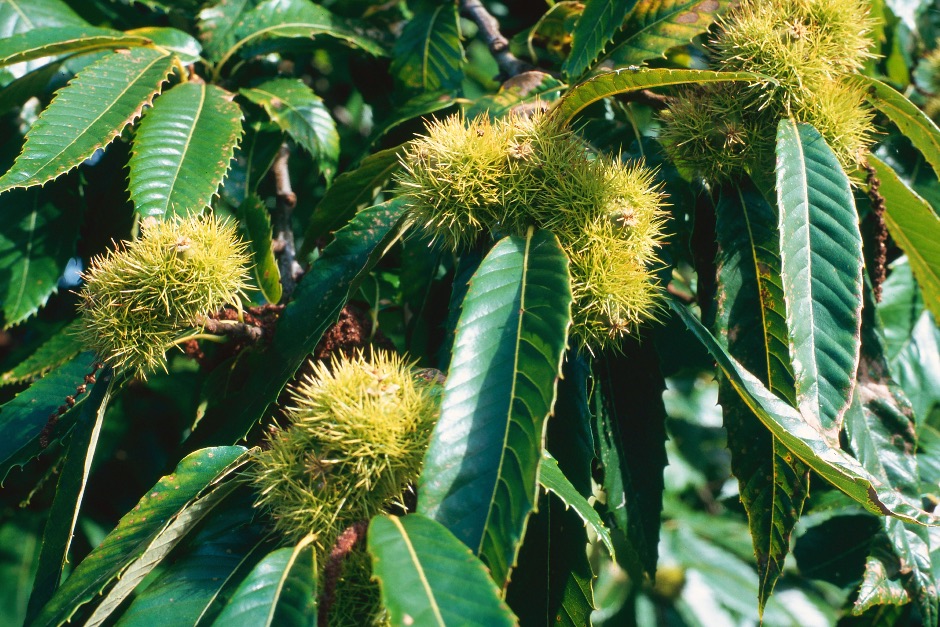
31 Oct What Tree? Sweet Chestnut
Sweet Chestnut (Castanea sativa)
The Sweet Chestnut (Castanea sativa) and Christmas go hand in hand with the nuts being a seasonal favourite, and is the species that has been awarded the 2023 Tree of the Year.
This deciduous tree can live for a very long time – up to 700 years. It can reach up to 35 metres in height and belongs to the same family as oaks and beech trees.
Sweet Chestnuts can grow to a vast girth size, up to 2 metres is not unheard of. In fact, one of the largest sweet chestnut trees is in Gloucestershire, measuring nearly 13m across.
With a smooth bark that is a greyish, purple colour it is commonly found throughout the UK in woods and copses, especially in parts of southern England where it is still managed to form large areas of coppice. However, the sweet chestnut is not a native of the British Isles. The tree originates from southern Europe, western Asia and North Africa and its journey to the UK is unclear, although some think it arrived with the Romans who also had an affection for the nuts.
Whilst it might not be native to Britain it has certainly made itself at home and now its flowers provide an important source of nectar and pollen for bees and other insects, while red squirrels eat the nuts. A large number of micro-moths feed on the leaves and nuts.
Uses of sweet chestnut
Sweet Chestnut timber is similar to oak, but more lightweight and easier to work with. When young, it has a straight grain, but spirals in older trees. It is used in carpentry, joinery and furniture, especially in the South East where the small chestnut coppicing industry has enjoyed a revival, producing poles.
The nuts of the Sweet Chestnut are edible and often roasted (over an open fire) or used in stuffing, cake filling or nut roasts. Their nutritional content is rich in vitamin C and B, magnesium, potassium and iron.
Appearance and Identification
Identified in winter by the bark which has fissures that spiral up around the tree.
In late Spring to early Summer the sweet chestnut tree produces long, yellow catkin flowers that are small and inconspicuous with yellow or white stamens. After pollination by insects, these flowers develop into the shiny, red-brown fruits wrapped in the familiar green, spikey shell.
The species is often confused with the Horse Chestnut (or conker) tree. After all, they both have similar nuts and have the green spikey shell. The leaves are where the difference lies. Where the Sweet Chestnut’s leaves are long and serrated, the Horse Chestnut has hand-shaped leaves with deeply divided ‘fingers’.
Propagation and control
Sweet chestnut trees have experienced a growing threat from Oriental Chestnut Gall Wasp (OCGW) and a fungus, Chestnut blight.
The OCGW is a pest of sweet chestnut trees because activity by its ‘larvae’ causes abnormal growths to form on the buds (called galls), leaves and leaf stakes. In high numbers, they can weaken the tree, make it more susceptible to other pests and diseases, and result in tree decline. The wasp does not attack horse chestnut trees.
Sweet Chestnut trees are also susceptible to chestnut blight, a fungus that attacks the bark of chestnut trees. Symptoms of chestnut blight include cracks in the bark that develop into sunken cankers, brown wilted leaves and orange fruiting bodies on the bark.
Young trees can also suffer from squirrel damage.
Sources and Reference:





